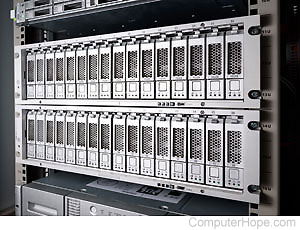San Antonio Traffic: Mastering The Maze Of The Alamo City
For anyone who lives in or frequently visits San Antonio, the phrase "San Antonio traffic" often conjures images of bustling highways, unexpected delays, and the perennial quest for the quickest route. As one of the fastest-growing major cities in the United States, San Antonio's charm and economic vitality come with the inevitable challenge of managing an ever-increasing volume of vehicles on its roadways. Understanding the dynamics of local traffic isn't just about avoiding frustration; it's about reclaiming your time, enhancing your daily commute, and contributing to a more efficient urban environment.
Navigating the intricate network of freeways, thoroughfares, and charming historic streets requires more than just a GPS; it demands a strategic approach, up-to-date information, and an awareness of the city's unique commuting patterns. This comprehensive guide aims to equip you with the insights and tools necessary to conquer the daily gridlock, offering practical tips and a deeper understanding of what drives San Antonio's traffic landscape. From peak hour congestion to major construction projects, we'll explore how to move smarter, not harder, through the heart of Texas.
Table of Contents
- Understanding San Antonio Traffic Patterns
- Major Roadways and Congestion Hotspots
- The Impact of Growth and Construction
- Leveraging Technology for Smarter Commutes
- Public Transportation and Alternative Options
- Parking Solutions in San Antonio
- Safety and Driving Tips for San Antonio Roads
- The Future of San Antonio Traffic Management
Understanding San Antonio Traffic Patterns
San Antonio's traffic behavior is largely dictated by its geographic layout and economic centers. Unlike some cities with a clear central business district, San Antonio has multiple hubs of activity, including Downtown, the Medical Center, USAA, and various military installations. This distributed employment landscape means that traffic doesn't always flow neatly in and out of one core area. Instead, commuters often traverse different quadrants of the city, leading to congestion on multiple major arteries simultaneously.
Peak hours are predictably challenging. Mornings typically see heavy traffic from 6:30 AM to 9:00 AM, as residents head to work and school. The afternoon rush generally begins around 3:30 PM and can extend well past 6:30 PM, particularly on Fridays. Special events, such as Spurs games, Fiesta celebrations, or conventions at the Henry B. González Convention Center, can significantly amplify congestion, especially in the downtown and arena vicinities. Understanding these patterns is the first step in effectively navigating San Antonio traffic.
Major Roadways and Congestion Hotspots
San Antonio's road network is dominated by a series of loops and spokes. The primary culprits for congestion are the inner and outer loops (Loop 410 and Loop 1604, respectively) and the major interstates that bisect the city (I-10, I-35, and US-281). Each has its own personality when it comes to traffic.
The Loop 410 Challenge
Loop 410, often referred to simply as "410," encircles the inner core of San Antonio and is a perennial hotspot for congestion. Its northern and western segments, in particular, bear the brunt of heavy commuter traffic. The interchanges with I-10 West (towards Boerne) and US-281 North (towards Stone Oak) are notorious bottlenecks. Drivers often experience stop-and-go conditions here during peak times, and even mid-day can see significant slowdowns due to incidents or ongoing construction. Staying updated on the latest conditions for Loop 410 is crucial for any San Antonio driver.
I-35: The North-South Artery
Interstate 35 serves as a vital north-south corridor, connecting San Antonio to Austin and Dallas to the north, and Laredo to the south. Within the city, I-35 experiences heavy truck traffic due to its role as a major NAFTA trade route. The downtown section, especially where it merges with I-10, is a complex interchange that frequently sees significant delays. Further north, the stretch connecting to Loop 410 and Loop 1604 is also prone to severe congestion, particularly during the morning and evening commutes. This road is not just for local San Antonio traffic; it's a major regional thoroughfare.
Other significant arteries include I-10 (east-west), US-281 (north-south), and Loop 1604 (the outer loop). Loop 1604, especially on its rapidly developing north side, has seen a dramatic increase in traffic volume in recent years, leading to extensive widening projects that, while promising future relief, currently contribute to delays.
The Impact of Growth and Construction
San Antonio's remarkable population boom, consistently ranking among the fastest-growing large cities, is a primary driver of its traffic challenges. More residents mean more vehicles on the road, putting immense pressure on existing infrastructure. To address this, the city and the Texas Department of Transportation (TxDOT) are engaged in numerous large-scale construction projects aimed at expanding capacity and improving flow. These projects, while necessary for long-term relief, inevitably cause short-term disruptions. For instance, the expansion of Loop 1604, the I-35 NEX (Northeast Expansion) project, and various interchange improvements frequently involve lane closures, detours, and reduced speed limits. Keeping abreast of these construction activities is vital for commuters. Resources like the TxDOT San Antonio district website or local news traffic reports often provide detailed updates on ongoing projects and their expected impact on San Antonio traffic.
Leveraging Technology for Smarter Commutes
In the digital age, navigating San Antonio traffic doesn't have to be a guessing game. A wealth of technological tools is available to help commuters make informed decisions and avoid frustrating delays. Real-time traffic applications like Google Maps, Waze, and Apple Maps are indispensable. These platforms aggregate data from millions of users and official sources to provide up-to-the-minute information on congestion, accidents, road closures, and even police activity. They can suggest alternative routes, estimate travel times, and alert you to unexpected slowdowns ahead.
Beyond navigation apps, many local news outlets and radio stations offer dedicated traffic reports during peak hours. Some city and county transportation departments also provide online dashboards with live camera feeds and incident reports. By checking the current status of traffic conditions before you leave, and staying updated throughout your journey, you can significantly reduce your exposure to gridlock. Think of these tools as your personal "traffic management center," providing the crucial information you need to make optimal travel choices.
Public Transportation and Alternative Options
While driving remains the dominant mode of transport, San Antonio is actively working to enhance its public transportation system and promote alternative commuting options to alleviate San Antonio traffic. Exploring these alternatives can be a game-changer for many residents.
VIA Metropolitan Transit
VIA Metropolitan Transit is San Antonio's public transportation agency, offering bus services throughout the city and surrounding areas. VIA operates a network of bus routes, including express routes that serve major employment centers and park-and-ride facilities. While bus travel may take longer than driving for some routes, it eliminates the stress of navigating traffic and finding parking, especially for downtown destinations or events. VIA also offers services like VIA Link, an on-demand transit service, and special event services, providing convenient ways to reach popular venues without dealing with parking or congestion. Utilizing VIA can be a cost-effective and environmentally friendly way to travel.
Biking and Pedestrian Initiatives
For shorter distances or for those living close to work, biking and walking are increasingly viable options. San Antonio has been expanding its network of bike lanes, shared-use paths, and pedestrian-friendly infrastructure, particularly in the urban core and along its extensive greenway trails. The B-Cycle bike-share program offers an accessible way to rent bikes for short trips. While not suitable for all commutes, these initiatives provide healthy, sustainable alternatives that can reduce the number of cars on the road and ease San Antonio traffic pressure. The city's commitment to creating more walkable and bikeable communities is a long-term strategy for sustainable urban mobility.
Parking Solutions in San Antonio
Finding parking can be as challenging as navigating traffic, especially in popular areas like Downtown, the Pearl District, or the Medical Center. San Antonio offers a variety of parking solutions, but knowing your options ahead of time is key. Downtown, numerous parking garages and surface lots are available, with varying rates. Many establishments offer validated parking for patrons. For events, consider utilizing park-and-ride services offered by VIA, which often drop off directly at major venues.
For daily commuters, exploring monthly parking permits in garages or lots near your workplace can be a cost-effective solution. Additionally, apps like ParkMobile or SpotHero can help you find and reserve parking spots in advance, saving you time and hassle. Understanding the available parking options and their costs can significantly improve your overall commuting experience in San Antonio.
Safety and Driving Tips for San Antonio Roads
Driving in any busy urban environment requires vigilance, and San Antonio is no exception. Here are some essential tips to enhance your safety and reduce stress on the road:
- **Stay Alert and Minimize Distractions:** Put away your phone. Distracted driving is a leading cause of accidents.
- **Maintain Safe Following Distances:** Especially on congested freeways, sudden stops are common. A safe following distance gives you time to react.
- **Be Aware of Construction Zones:** Slow down, obey all signs, and be prepared for sudden lane shifts or closures. Construction activities are a constant on San Antonio roads.
- **Understand Interchanges:** The major freeway interchanges (e.g., I-10/I-35, I-10/Loop 410) can be complex. If unfamiliar, review them on a map beforehand.
- **Utilize HOV Lanes (Where Available):** High-Occupancy Vehicle lanes can offer a quicker commute for carpoolers or those with qualifying vehicles.
- **Plan Your Route:** Even if you know the city, checking real-time traffic before you leave can help you avoid unexpected delays.
- **Be Patient:** Traffic can be frustrating, but aggressive driving only increases risks.
These simple practices can make a significant difference in your daily commute and contribute to safer roads for everyone navigating San Antonio traffic.
The Future of San Antonio Traffic Management
The city of San Antonio and regional transportation authorities are continuously working on long-term strategies to manage and improve traffic flow. Beyond the ongoing road widening projects, there's a growing emphasis on smart traffic signal technology, which uses sensors and AI to optimize signal timing based on real-time traffic volumes. Investment in public transportation, including potential future light rail or rapid transit options, is also part of the conversation to provide more robust alternatives to private vehicle use.
Furthermore, urban planning initiatives are focusing on creating more mixed-use developments, allowing residents to live closer to work, shopping, and entertainment, thereby reducing the need for long commutes. As San Antonio continues to grow, the commitment to innovative solutions and integrated transportation planning will be crucial in ensuring that the city remains accessible and its traffic manageable for future generations. The aim is to create a resilient and efficient transportation network that supports the city's dynamic growth while minimizing the impact of San Antonio traffic on daily life.
Conclusion
Navigating San Antonio traffic is an inherent part of living in or visiting this vibrant, expanding city. While challenges exist, armed with the right information, tools, and a proactive mindset, you can significantly improve your commuting experience. From understanding peak patterns and major bottlenecks to leveraging real-time navigation apps and exploring alternative transportation options like VIA Metropolitan Transit, there are numerous strategies to help you move more efficiently through the Alamo City.
The ongoing efforts by city planners and TxDOT to expand infrastructure and implement smart technologies offer a promising outlook for the future of San Antonio's transportation network. By staying informed, planning your journeys, and embracing safer driving practices, you not only reduce your own stress but also contribute to a smoother flow for everyone. We hope this guide has provided valuable insights to help you master the maze of San Antonio traffic. What are your go-to strategies for beating the San Antonio rush? Share your tips and experiences in the comments below, or explore our other articles for more local insights!

What is Storage Area Networks (SAN): A Clear Explanation - Server

Network Lessons: SAN

What is a SAN (Storage Area Network)?